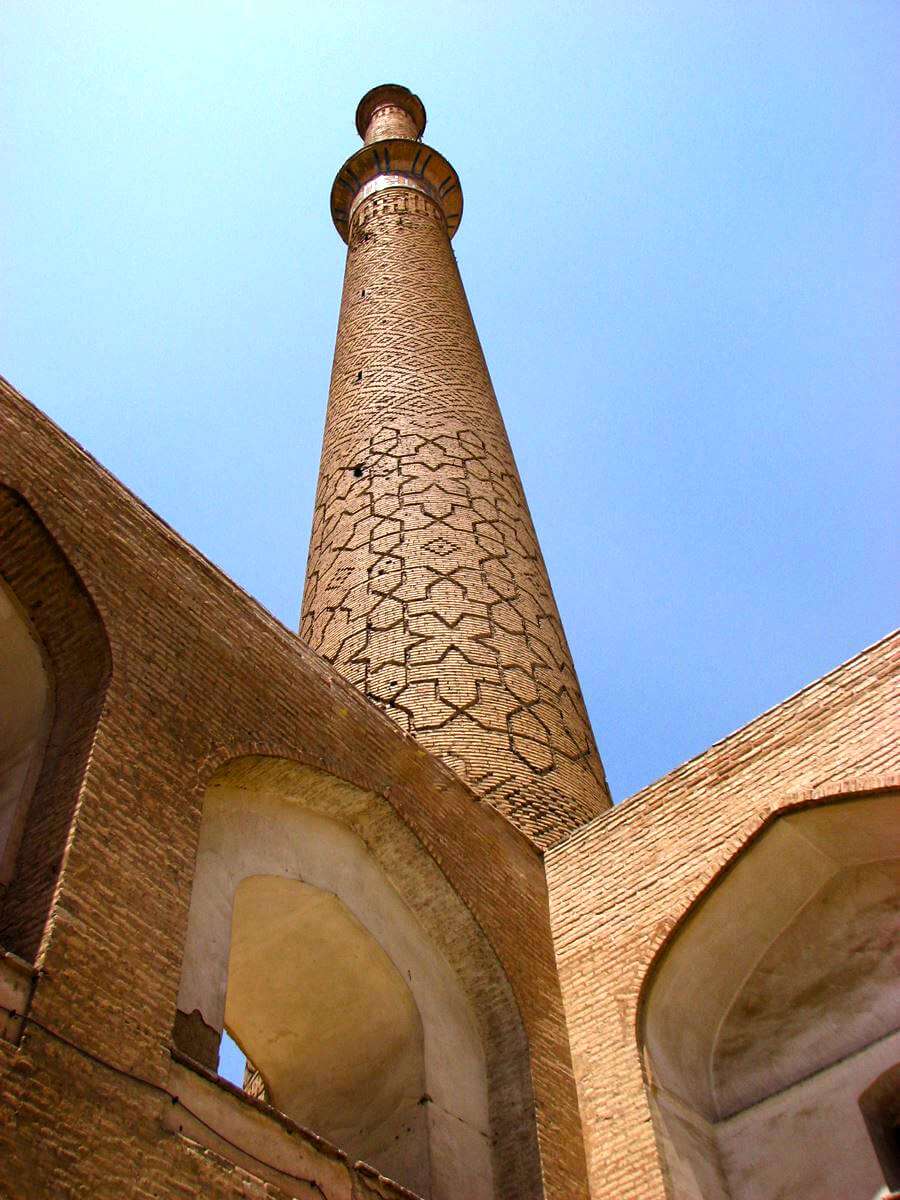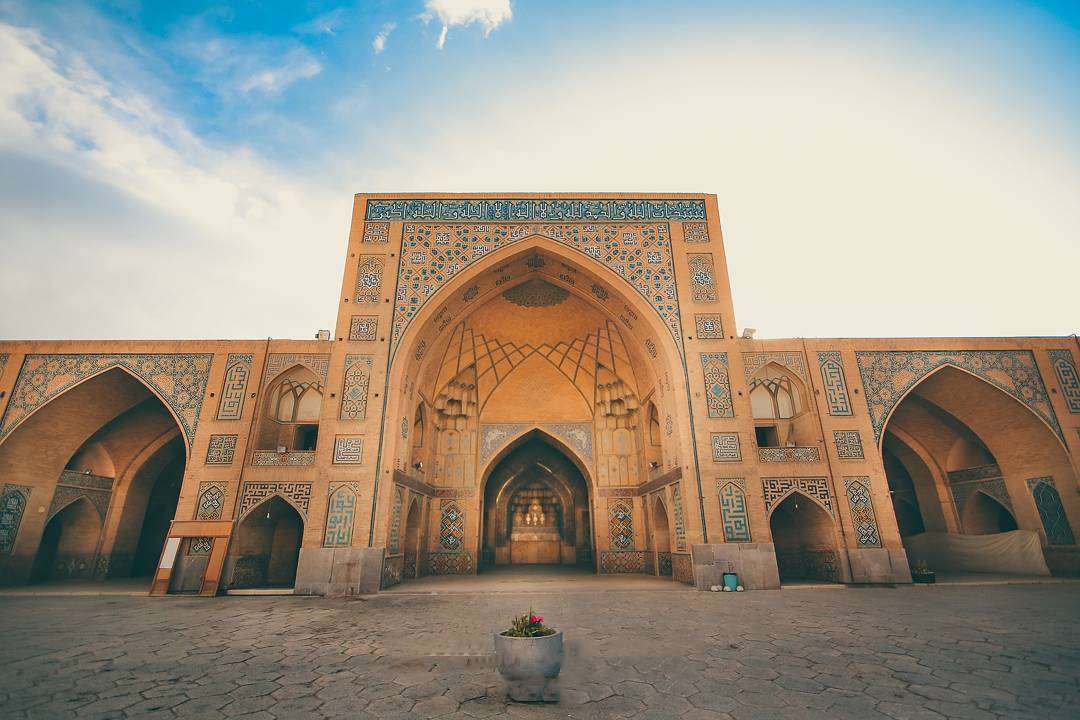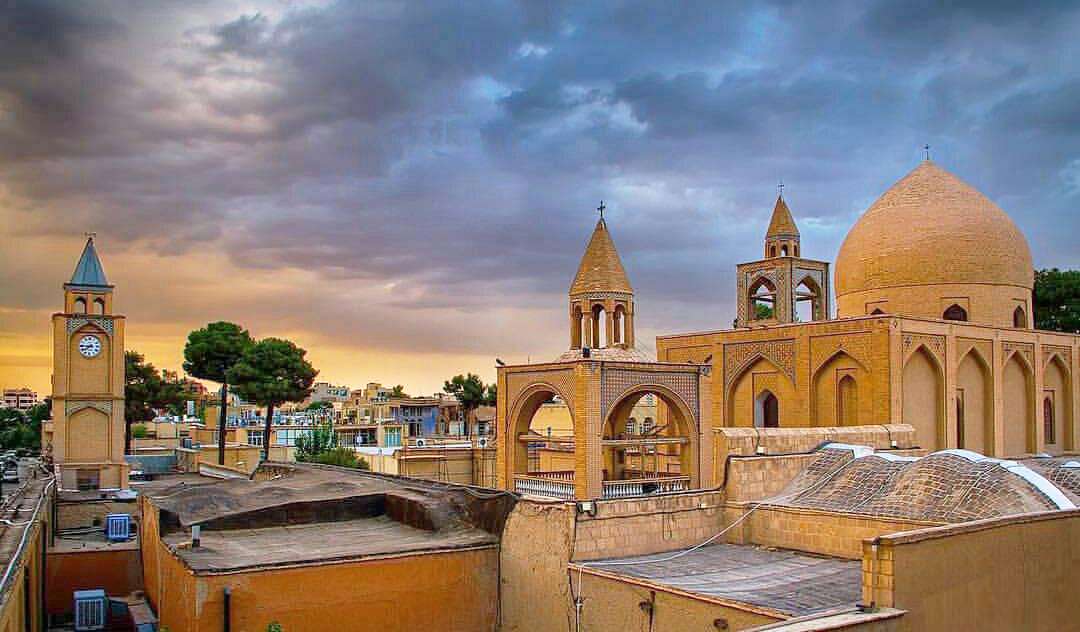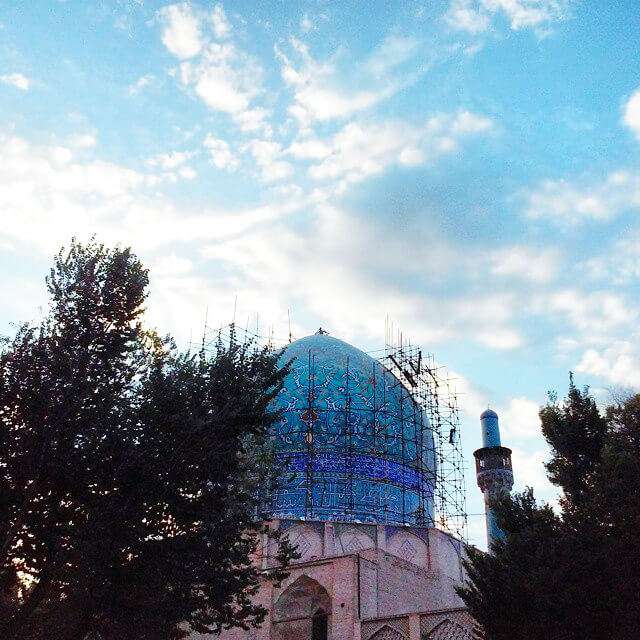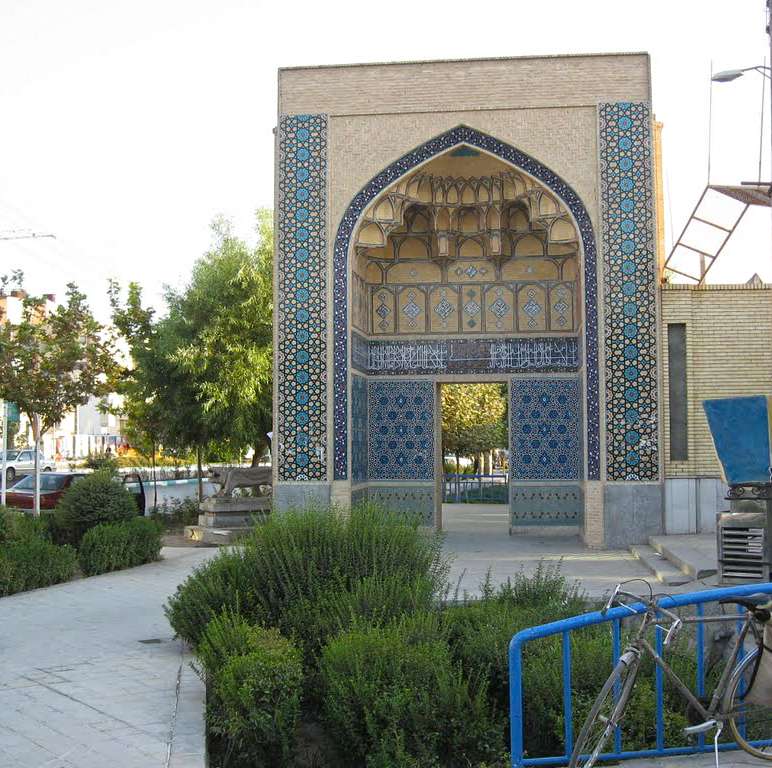Tourist Attractions In Iran
- Route NameTop 6 Places in Isfahan as an Open-air Museum of the Safavid Era
- ThemeArchitecture/UNESCO Heritage
- Duration6 hr(s)
Top 6 Places in Isfahan as an Open-air Museum of the Safavid Era
The prosperity of Isfahan in the 17th century is reflected in the prominent monuments and icons standing at each and every corner of the city. The jewel on the crown of the developments in the Safavid era is the royal square of Naqsh-e Jahan surrounded by four glorious landmarks. Moreover, The royal palace of Chehelsotun, the vibrant boulevard of Chahar-Bagh shaded by old lofty trees, and the Si-O-Se-Pol Bridge (33 bridge) with its unmatched arches on Zayanderoud river provide glimpses to the Safavid grandeur.
- Naqsh-e Jahan Square
- Ali-Qapu Palace
- Sheikh Lotfollah Mosque (Lotfollah Mosque)
- Chehel-Sotoun Palace
- Chahar Bagh Boulevard
- Si-o-Se Pol Bridge
- Route NameThe Best Everlasting Passages of Isfahan Bridges
- ThemeArt and Music/Architecture/Relax and Romance
- Duration3 hr(s)
The Best Everlasting Passages of Isfahan Bridges
Bridges have been constructed across the river in Isfahan since Sasanian era 224-651. By the time Isfahan had been designated as the capital of Safavid dynasty, building bridges became a part of the urban expansion. Built in a harmony with other imperial buildings, Safavid bridges were multifunctional. They were masterfully built not only for crossing the river but for controlling the water flow of the river to irrigate the nearby gardens and also for recreational purposes. All in all, there are thirteen bridges built on Zayanderud. However, we want to introduce the most important and accessible ones you can visit in Isfahan. So, we will go over the bridges one by one from the west to the east.
- Marnan Bridge
- Si-o-Se Pol Bridge
- Choobi Bridge (Joui Bridge)
- Khaju Bridge
- Route NameA Day Tour in Top Tourist Attractions of Isfahan
- ThemeArchitecture/UNESCO Heritage/Religious and Epic/Eastern Bazaar/Handicraft
- Duration10 hr(s) and 30 min(s)
A Day Tour in Top Tourist Attractions of Isfahan In the Safavid Era
The prosperity of Isfahan in the 17th century, the largest and most populated city of the Safavid era, is reflected in the prominent monuments and icons standing at each and every corner of the city. Founded by Shah Ismail I in the early 16th century, Safavid dynasty opened a new chapter in the history of Iran. By establishing the Twelver Shi’ism as the official religion of the state, the Safavids managed to unify a considerable number of ethnic groups and take control of the country. Originally centered in Ardabil, Safavids declared different cities as their capital during their relatively long rule (1501-1736). In chronological order, the capitals were Tabriz (1501), Qazvin (1548) and finally Isfahan (1598).
Actually, Shah Abbas the Great ordered the transference of the capital to Isfahan because the city was geographically, climatically, politically and strategically more suited to the aims of his kingdom. However, before the actual transference, a construction campaign was announced in Isfahan and many new monuments and sites were added to the city between the years 1590-1598. Some of these new additions are: Maydan-e Naqsh-e Jahan, Chahar Baq, Sheikh lotf Allah Mosque, Abbasi Congregational Mosque, Ali Qapu Palace, Qeisarieh Bazaar, Si-O-Se Pol and many others.
Art and Architecture
The blending of Persian and Islamic arts is represented in Safavid art. The enthusiasm of Safavid kings for art, especially Shah Abbas, promoted the Persian-Islamic art beyond the state boundaries, especially to Ottoman and India. Accordingly, carpet weaving, calligraphy, tile working, painting, and architecture came to perfection during the Safavid era. However, among these very different types of art, architecture and painting gained the upper-hand as the most important achievements of the Safavids. Many relics from that period confirm the importance of art in the Safavid dynasty. Naqsh-E-Jahan Square, the vibrant boulevard of Chahar-Bagh shaded by old soaring trees, the royal palace of Chehelsotun, Charbagh-Madrasah and its adjacent Honar bazaar, the luxurious Abbasi Hotel, unparalleled bridges of Khaju and Si-o-se-pol on Zayandeh Roud, and Jolfa quarter (the Armenian neighborhood) and its remarkable Vank Cathedral, are just some examples of Safavid architectural heritages in Isfahan displaying this intricate art.
Also, under the patronage of Shah Abbas I, Isfahan housed the last school of miniature in the 17th century. Furthermore, the striking tile and ceramic art of the Safavid period, characterized by Persian and Islamic motifs and patterns which were mostly printed on turquoise blue backgrounds, is reflected in many exquisite architectural decorations. A number of these pieces have remained in Isfahan and some of them are being kept in famous museums of the world. Some examples of the last case are the tiled panel with floral patterns in Philadelphia museum of Art and the painted tile panels in Metropolitan Museum.
Well-known Artists and Figures
Many famous artists and scholars in the Safavid era appeared to participate in the development of art and architecture of Isfahan. Doost Mohammed (painter and calligrapher), Sadeqi Beg (a well-known painter and creator of the “canon of Painting”), Ali Reza Abbasi and Mir Emad (calligraphers), and great philosophers like Sheykh Bahaie, Mir Damad, and Mulla Sadra are among the outstanding figures of that time.
Foreign Travelers to Isfahan
The reputation of Isfahan as a charming city during the Safavid reign attracted many travelers to this city. These travelers were of different walks of life, from traders and politicians to orientalists and missionaries. Chardin, a French jewel merchant who traveled to Isfahan in the 17th century, and wrote in detail about it, emphasized on the splendor and extent of the city which could rival London. Tenreiro, a Portuguese traveler, visited Isfahan in the 16th century, Thomas Herbert, a 17th-century English merchant, explored Isfahan and Kashan, and Adam Olearius, a German scholar, visited Isfahan in 1637 to explore the trade route with Iran. Olearius described the city as “the Metropolis of the whole kingdom of Persia”.
- Naqsh-e Jahan Square
- Jame Abbasi Mosque (Shah Mosque)
- Sheikh Lotfollah Mosque (Lotfollah Mosque)
- Ali-Qapu Palace
- Qeysarie Gate (Portal)
- Grand Bazaar of Isfahan (Qeysarieh Bazaar)
- Chehel-Sotoun Palace
- Chahar Bagh Boulevard
- Vank Cathedral
- Route NameThe Soaring Journey in the City of Minarets (Isfahan)
- ThemeArchitecture
- Duration1 hr(s)
The Soaring Journey in the City of Minarets (Isfahan)
Isfahan houses a number of historical minarets which beckon you to a world where the exotic seems commonplace. Minarets are the major elements in the Islamic architecture which are significant in case of structure, architectural style, and decoration. Primarily, the minarets used to be built individually in plains and along the roads, but later they were built close to other buildings, such as mosques and schools, as an iconic elements. Minarets, deriving their name from the word “nar,” meaning fire, used to hold fire to provide lighting. Then, they changed to function as modern traffic lights, guiding caravans and strangers to their destined cities. After Islam, they turned into a place from which people were called to their daily prayers. This route shows the real-life picture of the art and architecture of the minarets, practiced during the 12th-14th century.
- Chehel-Dokhtaran Minaret
- Sarban Minaret
- Dar al-Ziyafeh Minarets
- Ali Minaret
- Route NameThe Best Walks from the Buyid Architecture to the Qajarid Patterns
- ThemeArchitecture/Museum/Religious and Epic
- Duration2 hr(s) and 15 min(s)
The Best Walks from the Buyid Architecture to the Qajarid Patterns and Contemporary Art
Visitors in Isfahan can put pieces of several episodes of history together to come to a picture of Iranian and Islamic art. Isfahan is most readily identified with the traces left by the Safavids. Take time to appreciate the stability and originality of the Safavid art by visiting the peaceful Safavid Mosque built on the remnants of a mosque from the Buyid era. Continue to embrace more art elaborately displayed in the opulent Chehel-Sotun Palace. Then examine the Safavid and Qajarid architectural gem housing the contemporary works of art.
- Hakim Mosque
- Chehel-Sotoun Palace
- Isfahan Museum of Contemporary Arts
- Route NameThe Top Places & World-Known Architectural Heritages of Isfahan
- ThemeArchitecture/UNESCO Heritage/Religious and Epic
- Duration3 hr(s) and 30 min(s)
The Top Places & World-Known Architectural Heritages of Isfahan
This route invites you to visit some spectacular world-known touristic sites, reflecting the most important cultural spots of Isfahan. Iran contains 21 cultural properties inscribed on the world heritage list. Three of these world heritages are located in Isfahan; Jame mosque, Naqsh-e Jahan Square, and Chehelsotun Palace. Jame mosque is registered in UNESCO heritage list in 2012. Naqsh-e-Jahan Square, bordered by four magnificent buildings, is the first site registered as UNESCO heritage in Isfahan in 1979 and Chehelsotun Garden is among the nine Persian gardens registered as UNESCO properties in 2011.
- Jame Mosque of Isfahan
- Naqsh-e Jahan Square
- Chehel-Sotoun Palace
- Route NameThe Top Holy Houses of Armenians in Isfahan (Armenian Churches)
- ThemeArchitecture/Religious and Epic
- Duration4 hr(s)
The Top Holy Houses of Armenians in Isfahan (Armenian Churches)
Visiting New Julfa never ceases to inspire, thanks to the historical houses and Armenian Apostolic Churches. During the reign of Shah Abbas I, a new phase of war began between the Safavids and the Ottoman empire. In 1601, the Safavid army was forced to draw back and to prevent the Ottoman army from crossing the southern part of Aras river, Shah Abbas ordered the evacuation of all the residential neighborhoods located in the Ararat plateau and the Nakhchivan region. As a result, an obligatory migration was organized and Armenians were settled in different regions of Iran, including Gilan, Mazandaran, Hamedan, Kashan, Fereydan, Chaharmahal-va-Bakhtiari, Shiraz, and Isfahan.
Among the Armenians who were forced to migrate to Isfahan, there were merchants, artisans and craftsmen. Upon their arrival in Isfahan, they were settled along the south bank of the Zayandehrud river and their new home became known as New Jolfa. This quarter is still prospering as the residence of Armenian people who have preserved their own language and identity, while obeying the Iranian laws.
During the reign of the Safavid dynasty, New Jolfa’s prosperity and beauty owed to the mastery of its new residents in arts, commerce and industry as well as the beautiful houses and churches located in this quarter. Settling down in Isfahan, Armenian people were influenced by the Iranian architecture and manifested it by combining their own architectural techniques, traditions and beliefs with those of the Iranian culture. For instance, churches in Isfahan feature a large dome, similar to that of a mosque, instead of conical or semi-conical domes or copulas installed over the Western churches. The characteristics of the Islamic and Safavid architecture are evident in the houses of New Jolfa too.
- St. Mary Church of Isfahan
- Saint George Church of Isfahan
- Bedkhem Church (Bethlehem)
- Vank Cathedral
- Route NameAmazing Walking Tour Through the Safavid Royal Promenade in Isfahan
- ThemeArchitecture
- Duration3 hr(s)
Amazing Walking Tour Through the Safavid Royal Promenade in Isfahan
You are invited to stroll along the boulevard which once used to be a most beautiful royal promenade flanked by lavish gardens, gardens which must now be sought in history. Though having lost its original Safavid splendor, this historic street is still a nostalgic and enlivening spot for both locals and tourists. What has survived from the magnificent Safavid structures, which bordered the boulevard, is the Chaharbagh School. This route invites you to the Safavid landmarks including the Chaharbagh Boulevard, the Chaharbagh theological school, and Hasht Behesht Palace.
- Chahar Bagh Boulevard
- Chahar Bagh School
- Hasht-Behesht Palace
- Route NameFall in Love With the Tile Art Design of Mosques in Isfahan
- ThemeArchitecture/Religious and Epic
- Duration2 hr(s)
The Flower and Birds on Pink Tiles
Isfahan, thanks to its geographical position, fertile soil and abundant water resources coupled with the glorious heritage of preceding periods, has always been an important, strategic city of Iran. Although Tehran, as the capital of the Qajars, is replete with Qajarid buildings, Isfahan of the Qajar epoch is considered as the golden era of magnificent houses and mosques. The architectural features of the Qajar period were partly a continuation of Safavid traditions and partly an imitation of Western styles. The mosques in this route, Seyed Mosque, Rahim Khan Mosque and Rokn Al Molk Mosque partly portray the art and architecture of this era.
- Seyyed Mosque
- Rahim Khan Mosque
- Rokn al-Molk Mosque and School
- Route NameThe Best Walks to Travel in the Heart of Isfahan
- ThemeArchitecture/Religious and Epic/Slow Tourism
- Duration4 hr(s) and 30 min(s)
The Best Walks to Travel in the Heart of Isfahan
Chaos, jam-packed sites, rapid transportation, on-line media, quickly-prepared food, fast-rhythmic music, all share the basic characteristic of the present-day industrial, hi-tech world: velocity. And, of course, this velocity has opened to us many closed doors, replete with once unimaginable experiences.
However, these rapid experiences come with their own shortcomings: Broken communities, lack of mutual cultural understanding, pollution and peculiar disease, both mental and physical.
In response to the above situation, a new form of tourism has emerged, known as slow tourism. Slow tourism aims at reconstructing the broken chains of humanity, erasing pervasive cross-cultural misunderstandings and improving the general condition of our biophysical environment.
Here, by providing you with a special route, we make sure to fulfill all the conditions which make a tour slow. At the same time, we endeavor to bring you a pleasant day, full of new discoveries and excitements in Isfahan.
- Darb-e Kushk Complex
- Ali Gholi Agha Complex
- Tomb of Abu Masud Razi (Velayat House)
- Dardasht Neighborhood
- Madras of Ibn Sina (Avicenna School)
- Baba Qasem Mausoleum and Imamieh School



